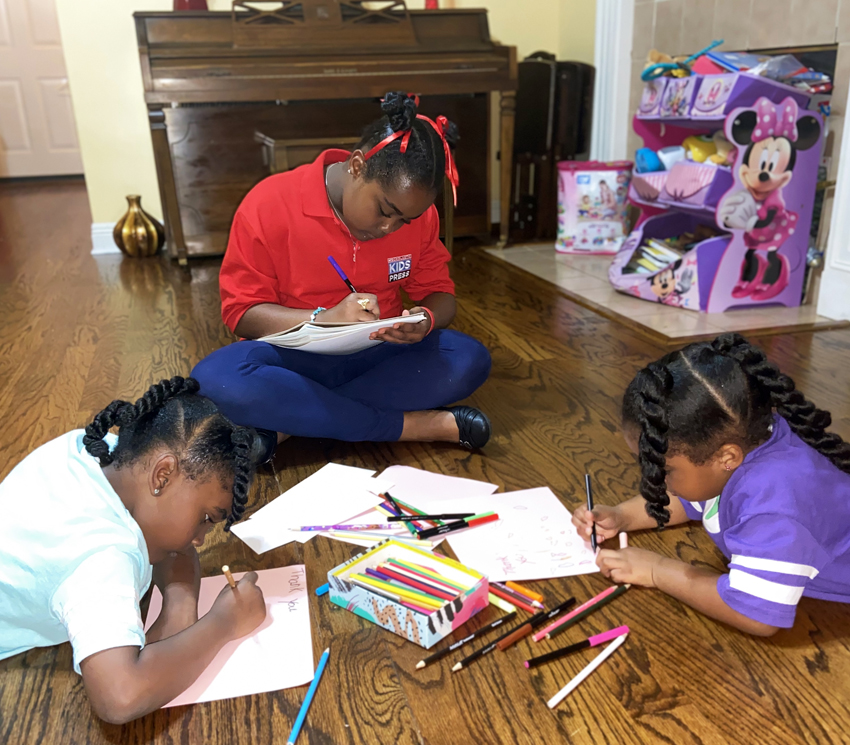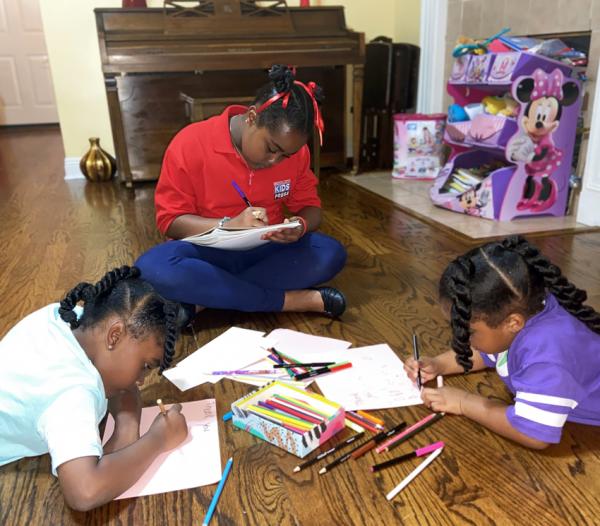KID REPORTERS’ NOTEBOOK
The Power of Writing Letters


Zhorie'l and her younger sisters decorate cards for loved ones at their home in Louisiana.
April is National Letter and Card Writing Month. Now more than ever, kids can learn about the importance and historical significance of card and letter writing.
The practice helps to improve writing skills and literacy. It also draws on a centuries-old tradition of writing, sending, and receiving letters, postcards, and greeting cards.
Letter writing can be fun and personal. That’s what Samantha Webre, a third-grade teacher at Woodvale Elementary School in Louisiana, wants her students to experience.
“It’s important for us to learn a variety of writing types, and letter writing is just one of those ways,” Webre says. She created a video for her students and read aloud Ten Thank-You Letters (Nancy Paulsen Books, 2014) by Daniel Kirk. Webre’s favorite part, she says, is that the characters take time to thank people in a very specific way.
Samantha Webre, a third-grade teacher in Louisiana, helps her daughter create a thank-you card.
IT FEELS GOOD TO SAY THANK-YOU
Because of the coronavirus pandemic and the closing of schools in Louisiana, Webre has been conducting classroom lessons online. She tries to be creative, including issuing a “Spring Break Thank You” challenge to her students.
Webre invited her students to write thank-you letters. It would not only make them feel better, but also the recipients. Letters could be written to loved ones, healthcare workers, first responders, and anyone who is helping to keep us safe during the pandemic.
“In a time like we’re experiencing now, the value of a thank-you card or a letter to express that you miss somebody is really important,” Webre says.
A personalized letter can show the recipient that the writer was thoughtful and put forth a lot of effort. And the writer has an opportunity to be creative.
My younger sisters and I have been using stickers, crayons, magic markers, and even paint to personalize our letters. We’re not able to hug our grandparents during the pandemic, but we can always send them a letter.

During the pandemic, Zhorie’l and her two younger sisters are writing thank-you cards at home.
